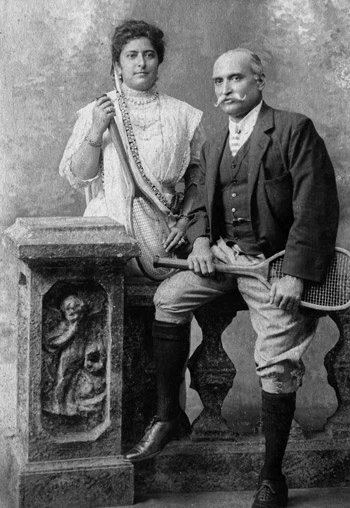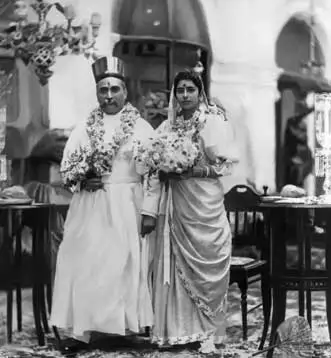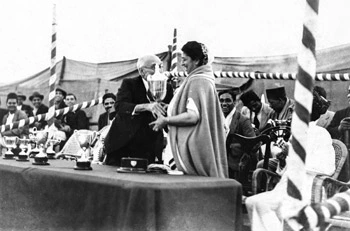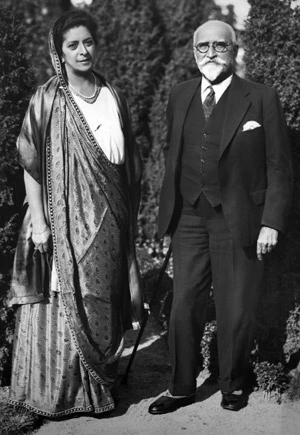Sir Dorabji and Lady Meherbai Tata: A Partnership of Vision and Service
 |
| Meherbai and Dorabji Tata |
Amid the Tata family’s stories of steel, science, and social reform, lies one of deep companionship—a story of Sir Dorabji Tata and Lady Meherbai Tata, whose bond as husband and wife became a force multiplier in their shared mission to serve society.
Sir Stanley Reed, longtime editor of The Times of India and a close friend of the family, spoke with great admiration of Sir Dorabji Tata when he wrote, “But this—Sir Dorabji Tata’s fulfillment of his father’s dream—would never have been accomplished if Sir Dorab Tata had not seen his purpose with wide eyes open; if he had not had at his side a wife who was staunch in the pursuit of these filial and patriotic duties as himself. Lady Tata was one of the clearest brains…. No one could put her own case with more convincing logic.”1
Sir Dorabji Tata, born on August 27, 1859, was the eldest son of Jamsetji Nusserwanji Tata. Raised under the guiding light of his father’s ideals—self-reliance, scientific temper, and inclusive development, Dorabji would go on to expand and institutionalise the Tata legacy.2 In 1897, Dorabji expressed interest in being married to Lady Meherbai Bhabha, daughter of Hormusjee Jehangir Bhabha, then Director of Education in the Mysore State. It is believed that Jamsetji himself played a role in the match, recognising in Meherbai a grace and intellect that matched his son’s. Born in 1879, Lady Meherbai was elegant, well-read, and musically gifted. The couple married on February 14, 1898, in a traditional Parsi ceremony at the Tata Mansion in Bombay, a grand affair attended by prominent Indian and European guests.3
 |
| Meherbai and Dorabji Tata after their wedding on February 14, 1898 |
A talented pianist and connoisseur of English literature, Meherbai was deeply influenced by the liberal education she received both before and after marriage. Meherbai was a staunch advocate for women’s rights, focusing on pressing issues such as the purdah system, child marriage, and women’s health. She co-founded the Bombay Presidency Women’s Council and played a pivotal role in establishing the National Council of Women in India, becoming one of the early champions of gender equity in colonial India. Her causes were often ambitious but always grounded in practicality and empathy—qualities that won her admiration across class and gender lines. In 1918, Lady Meherbai laid the foundation stone for a dam at Tukarwadi, part of the Andhra Valley Power Scheme, symbolising the growing role of women in public life. 4
 |
| Lady Meherbai Tata, collecting her prize (from Dorabji Tata) after winning a competition |
She hosted musical concerts not only as a patron of the arts but also to raise funds for causes she cared about. One such evening at Bombay’s Excelsior Theatre combined music with mirth, as Sir Dorabji entertained the audience with a cascade of witty stories from around the world.5
Sir Dorabji Tata and Lady Meherbai Tata were also united by shared passions for sports and youth development. In 1910, they jointly donated Rs. 250 each to establish a gymkhana in Mahabaleshwar, a symbolic gesture of their commitment to physical well-being and recreation.6 They were also frequently present at prize distribution ceremonies that were held in several educational institutions.7 Sir Dorabji, a sportsman at heart, had also played a key role in sending Indian athletes to the 1924 Olympics in Paris, covering their expenses out of his own pocket.
 |
| Meherbai with Dorabji Tata, a short while before her demise |
Though they had no children of their own, their legacy lives on in the countless lives they touched. Following Meherbai’s tragic death from leukemia in 1931, Dorabji honoured her memory by establishing the Lady Tata Memorial Trust, focused on supporting research in leukemia and other blood disorders. Years later, in a letter now preserved in the Olympic Archives, he would write: “I was much distressed by the unfortunate and sad death of my wife which has completely broken me down.” 8
Two years later, upon his own death, his estate became the cornerstone of the Sir Dorabji Tata Trust, which went on to fund institutions of learning, science, social science and public health, including the Indian Institute of Science in 1911, the Tata Institute of Social Sciences in 1936, and the Tata Memorial Hospital in 1941, among several others.
Together, Sir Dorabji and Lady Meherbai Tata built a life shaped by companionship, intellect, and a shared sense of purpose. As we mark their death anniversaries this June—Lady Meherbai on the 18th and Sir Dorabji on the 3rd, we are reminded that their lives were more than remarkable; they were purposeful. Their story endures as a quiet testament to what can be achieved when personal bonds are aligned with a larger vision of leaving behind a lasting impact.
Sources:
1 Lala, R.M., The Heartbeat of a Trust, Page 10 | 2 Lala, R.M., The Heartbeat of a Trust, Page 6 | 3 Sporting: Bombay Gymkhana Marriage of Mr. Dorabjee Tata, The Times of India, February 16, 1898 | 4 Andhra Valley Scheme: An Interesting Ceremony, The Times of India, December 23, 1918 | 5 New Nargole Hospital, The Times of India, April 2, 1917 | 6 ‘Mahabaleshwar Parsi Gym’, The Times of India, June 02, 1910 | 7 Medical College Sports: Events Keenly Conteste, The Times of India, March 14, 1930 | 8 Letter from Sir Dorabji Tata to Monsieur de Bailleul Latour, The Olympic Archives, December 11, 1931
Quick links
About Jamsetji N. Tata | Early days of Jamsetji Tata
About Sir Dorabji Tata | Sir Dorabji Tata: Catalyst for India's Olympic Debut
About Lady Meherbai Tata
About Sir Ratan Tata | Sir Ratan Tata - Support to nationalistic causes
About Lady Navajbai Tata
Sir Ratan Tata and Lady Navajbai Tata: A Legacy of Generosity, Grace and Compassion
About JRD Tata
About Ratan N. Tata | A tribute from Cornell Chronicle
Anecdotes
